Sharing is caring!
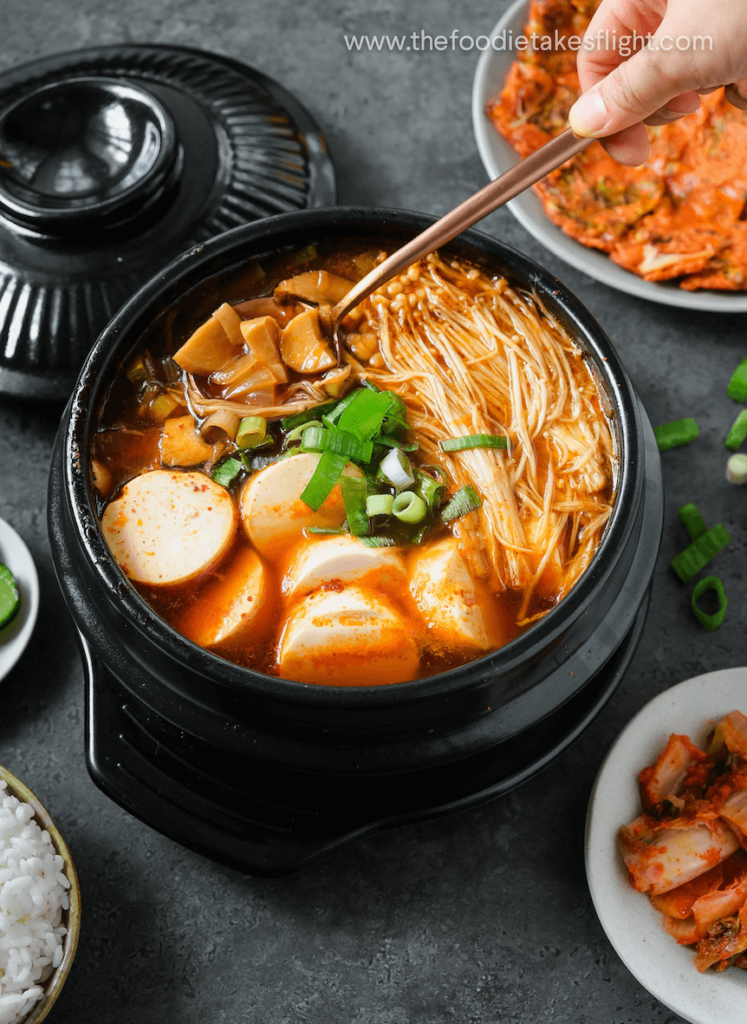
This Sundubu Jjigae 순두부 찌개 (which literally translates to ‘soft tofu stew’) is one of my favourite Korean dishes.
WHAT IS SUNDUBU JJIGAE?
Here’s a breakdown:
순두부 – sundubu (soft = 순, tofu 두부)
찌개 – jjigae (stew)
Put it together and you have 순두부찌개 sundubu jjigae!
It has a light yet really rich and flavourful base with a kick of spice from gochugaru. I’ve made this countless times at home and it’s a family favourite!
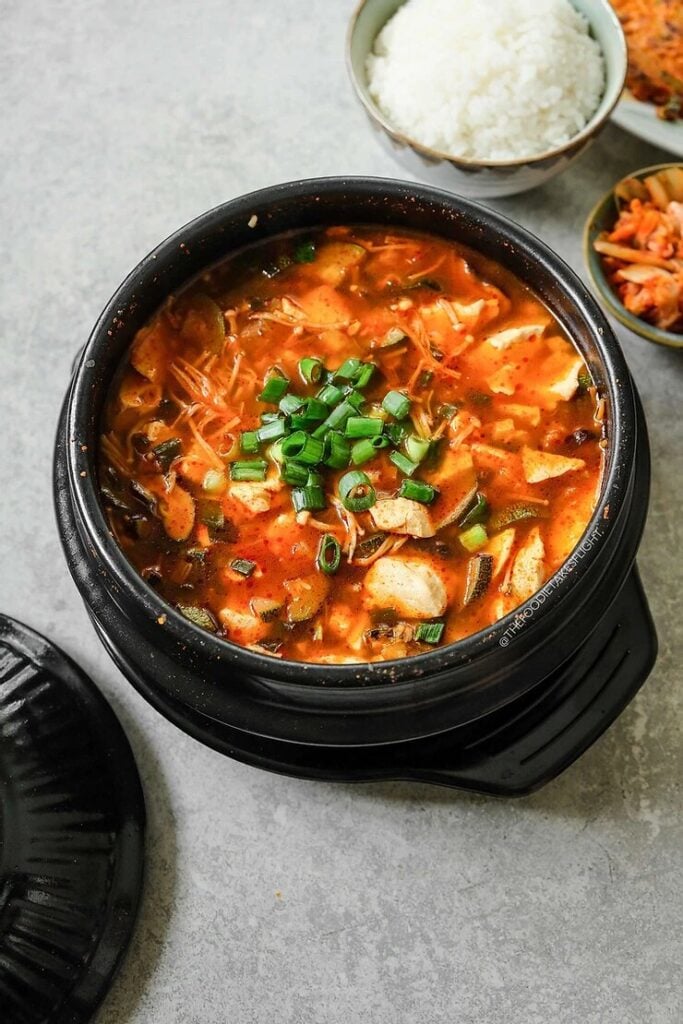
This is so comforting and perfect for warm and hearty meals with a bowl of steamed short grain rice and some banchan (or side dishes) like kimchi and kongnamul.
You can watch the recipe video below where I made this using a regular pot.
MORE ON SUNDUBU JJIGAE AND OTHER JJIGAE
Korean cuisine has various types of jjigae or stew. This one is a sundubu jjigae 순두부찌개, which literally translates to soft tofu (두 sun = soft, 두부 dubu = tofu) stew (찌개 jjigae). Its broth gets its distinct orange/red hue from the use of gochugaru or Korean red pepper flakes/powder. It’s very orange/red but is actually not that spicy since gochugaru is mild in terms of spice but is really bright red in colour. It also has a subtle sweet note.
What makes sundubu jjigae is of course the use of sundubu or soft tofu.
I grew up enjoying this and is usually made with some meat like small pieces or beef and/or seafood like squid and clams. But when I went vegan I of course wanted to make a vegan version of it.
So for this vegan version, I use a variety of mushrooms, that also give the base a nice umami flavour. I also find that king oyster mushrooms have a similar texture to squid, which goes perfect with this jjigae.
I’m really happy with how this turned out and my non-vegan family is, too!
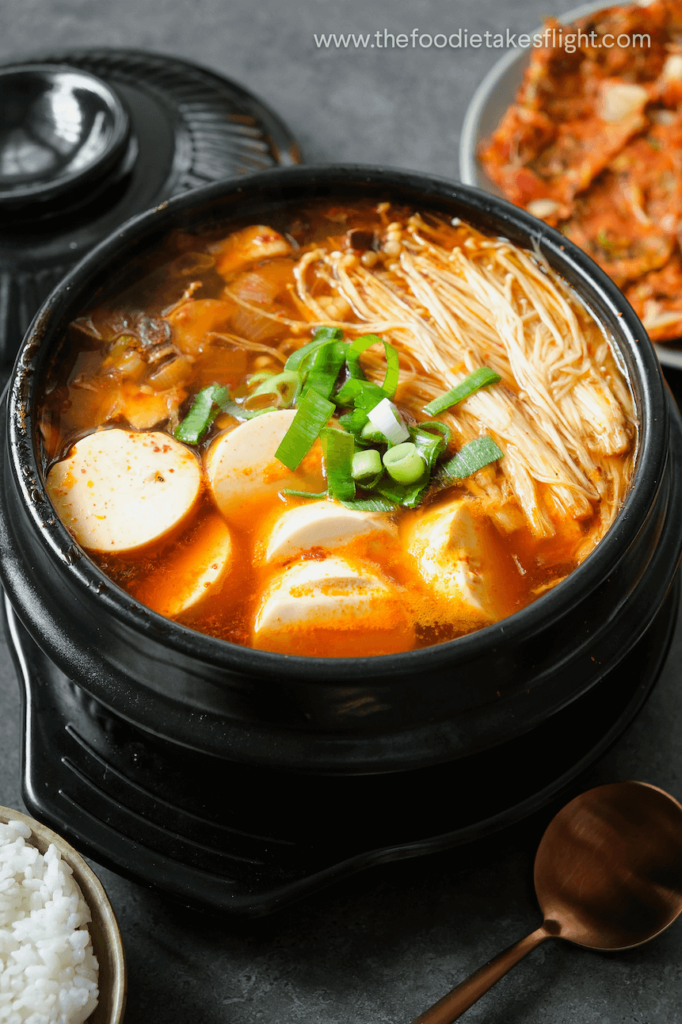
SUNDUBU OR SOFT TOFU
The sundubu or soft tofu gives this that silky texture and the mushrooms really add to the texture, most especially the enoki mushrooms that have this stringy texture that I really love.
You’ll also need a few basic ingredients and of course some soft tofu! Mine comes in a tube but it’s also available in blocks that you can purchase in supermarkets or Asian groceries.
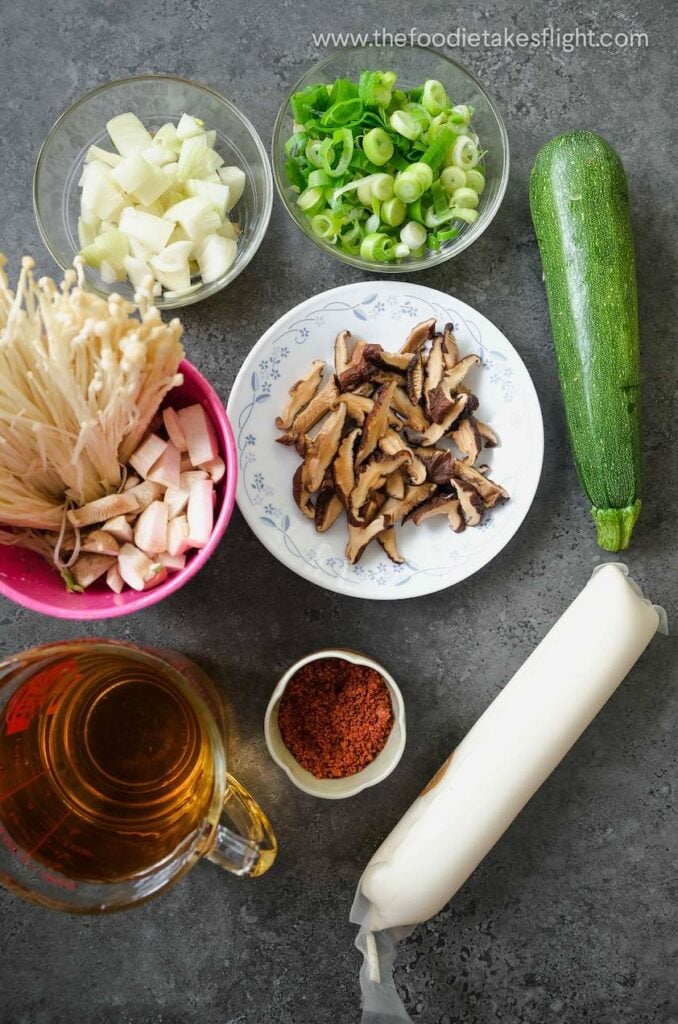
PREPARING THE BROTH
I like to cut through the kombu using a pair of scissors. I like to fold mine in half and cut around five 1” (2.5 cm) cuts on each side. Also, do NOT wash your kombu. The white powdery layer on the kombu is naturally occurring and is what adds to the umami flavour when soaked.
I like to soak mine in room temperature water and leave it in the fridge overnight for best flavour.
This will yield around 3 cups of broth since the dried mushrooms and kombu will absorb some water.
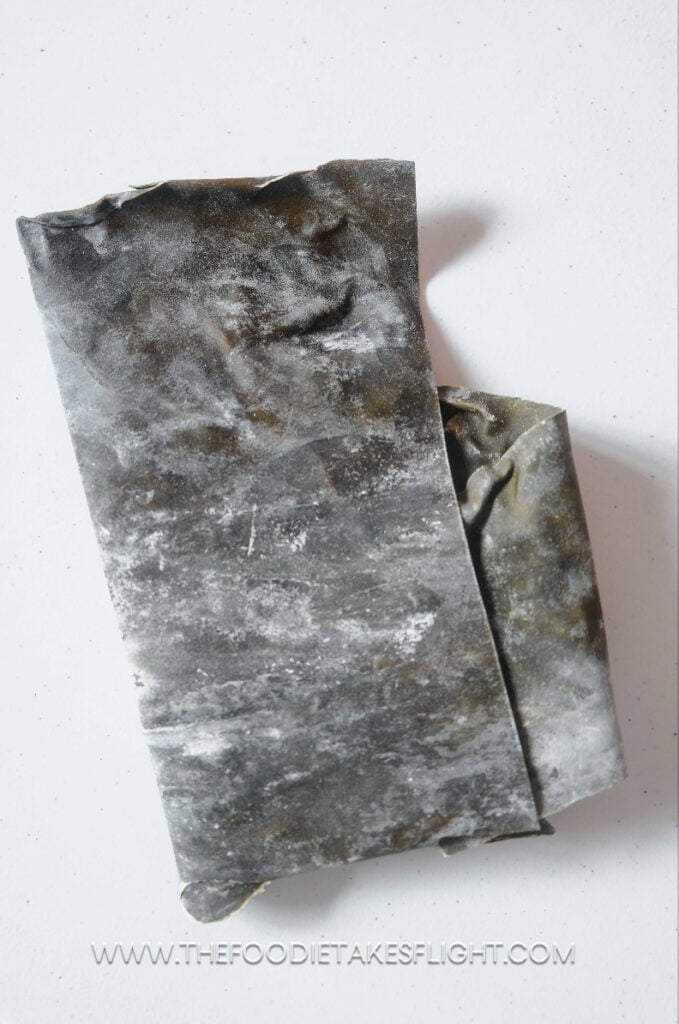


WHAT CAN I DO WITH THE LEFTOVER REHYDRATED KOMBU?
You can make kombu tsukudani or simmered kombu. Kombu Tsukudani is perfect with rice or as a side since even in small quantities, it packs so much flavour. It’s traditionally quite salty so that it can last long (even with refrigeration) but I love mine with a good balance of sweet and salty so I tend to add more sugar to get it that nice sweetness to balance out the saltiness.
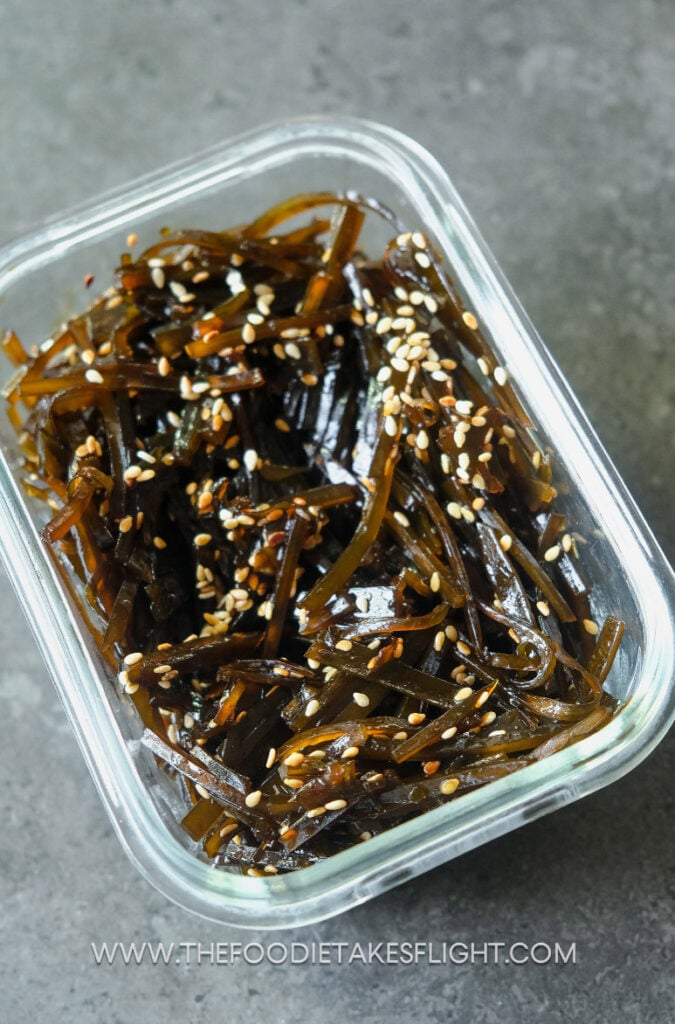
See my kombu tsukudani recipe here.
OPTIONAL: Vegan kimchi!
Adding some kimchi gives this dish an extra layer of flavour. You’ll basically end up with a kimchi sundubu jjigae (kimchi and soft tofu stew).

You can find my homemade vegan kimchi recipe here.
COOKING THE SUNDUBU JJIGAE
I love to use my ttukbaegi but you can use a regular pot. I just love to use this pot because it retains heat very well. So even after I turn off the fire, the jjigae is usually still boiling!

For this jjigae, I used a ttukbaegi or Korean earthenware/ceramic bowl. This bowl retains heat very well so even after turning off the heat, it’s still boiling.

And it can be used direct over open fire.

I made this in a regular pot too (see my video) but really prefer cooking and enjoying it from a Korean ttukbaegi because the bowl retains heat so well and I can cook and serve this jjigae in It.
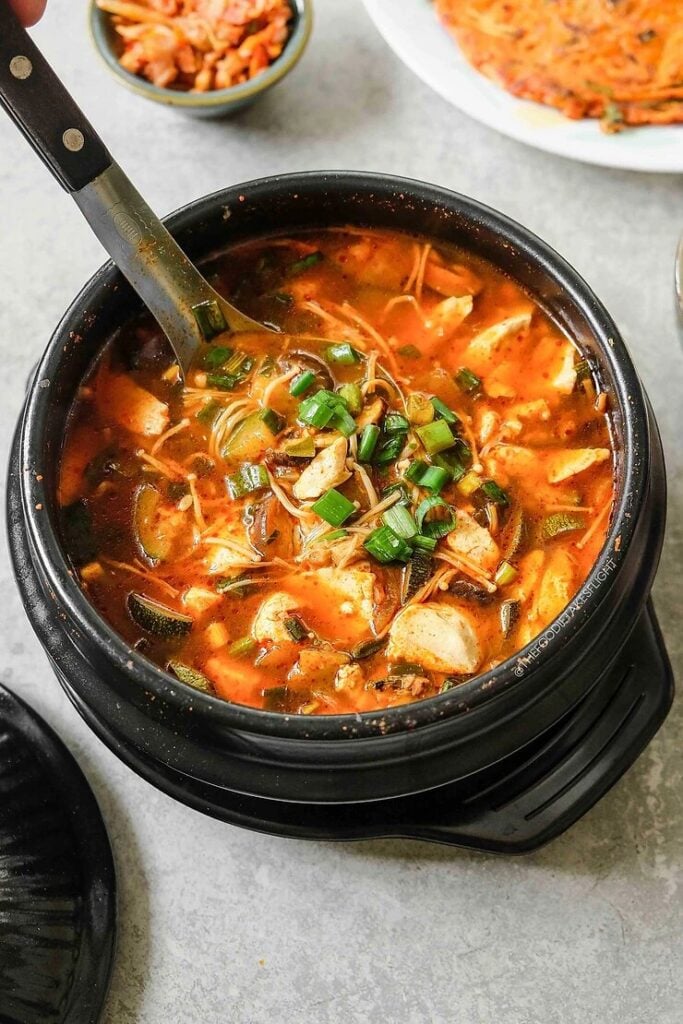
You’ll find the full recipe for this Korean vegan sundubu jjigae below.
HOW TO ENJOY THIS SUNDUBU JJIGAE
This is best enjoyed with a bowl of steamed short grain rice. Serve this with some banchan or side dishes even Kimchi Pancakes (recipe here) for a super hearty meal! 🙂
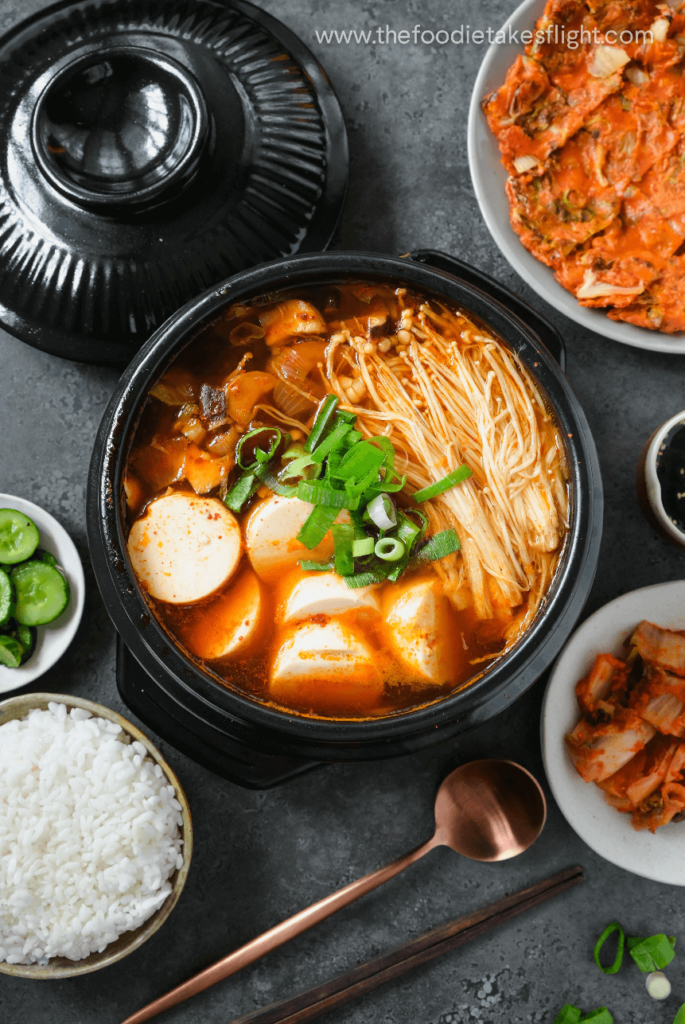
MORE KOREAN RECIPES YOU MIGHT LOVE
- Vegan Kimchi
- Korean Beansprout Salad
- Bibim Guksu (Korean Mixed Noodles)
- Kimchi Noodle Soup with Dumplings
- Kimchi Noodle Stir-Fry
- Jjajangmyeon
- Kimchi Pancakes or Kimchi Jeon
- Pajeon (Korean Scallion Pancakes)
Are you looking for more delicious, vegan recipes?
Get a copy of my upcoming cookbook, Vegan Asian!
If you crave vegan-friendly versions of classic Asian dishes, this cookbook is packed with Southeast and East Asian dishes inspired by those I grew up enjoying at home and those I’ve tried from my travels. From iconic Thai dishes to piping-hot Japanese fare and everything in between, the recipes in this will take your palate on a delicious food trip across Asia, and hopefully keep you coming back for more!
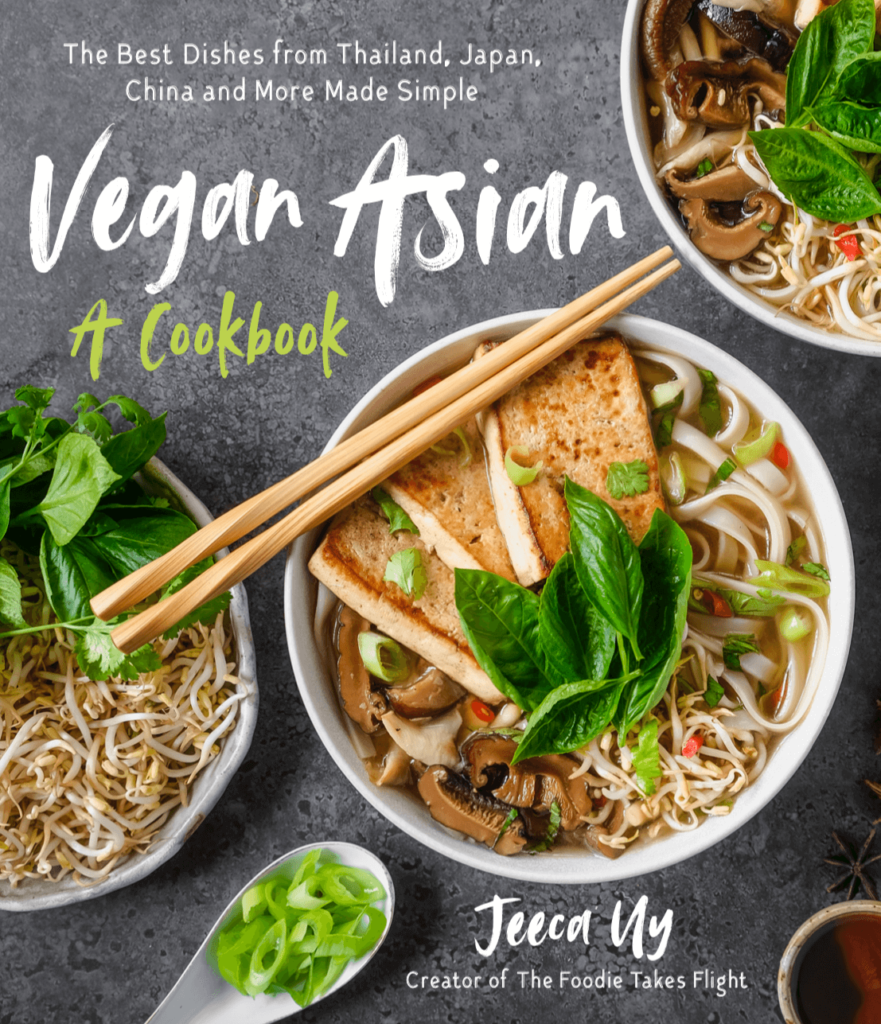

If you make this recipe, please tag me on my Facebook or Instagram and use the hashtag #thefoodietakesflight 🙂
Vegan Sundubu Jjigae 순두부찌개 (Korean Soft Tofu Stew)
Equipment
- Korean ttukbaegi (earthenware bowl) or regular pot
Ingredients
Broth
- 3-4 small dried shiitake mushrooms
- 0.5 oz dried kombu or dried kelp
- 4 cups water
Sundubu Jjigae
- 1.5 tbsp neutral cooking oil
- 1 small white onion diced
- 1/2 cup chopped scallion or green onions , white and green parts separated
- 2-3 tbsp gochugaru or korean hot pepper powder feel free to adjust according to desired spice (see notes)
- 3/4 cup chopped vegan kimchi optional (see notes), homemade recipe here
- 1 tbsp rice wine like mirin, sake, etc. (optional)
- 2-3 tbsp soy sauce or to taste
- 1 bundle fresh enoki mushrooms , 150 g
- 1 lb sliced fresh king oyster or shiitake mushrooms , feel free to use rehydrated shiitake mushrooms (see notes)
- 1 medium zucchini , sliced into small 1/4” thick quarters
- 3 cups mushroom-kombu broth or vegetable broth (see notes)
- 1 tsp minced garlic
- 1/2 tsp salt or more, to taste
- Pinch sugar
- 1 lb sundubu or soft tofu or silken tofu (mine was in a tube)
Optional to Serve and Enjoy
- Green parts of green onion for garnish
- Vegan kimchi or other banchan
- Steamed short grain rice
- Kimchi Jeon or Pancake , see recipe here
Instructions
- Prepare the broth: I like to cut through the kombu using a pair of scissors. I fold mine in half and cut around five 1” (2.5 cm) cuts on each side.Also, do NOT wash your kombu. The white powdery layer on the kombu is naturally occurring and is what adds to the umami flavour when soaked.I like to soak the mushrooms and kombu in room temperature water and leave it in the fridge overnight for best flavour.This will yield around 3 cups of broth since the dried mushrooms and kombu will absorb some water.
- Another option is to boil the mushrooms and kombu in water for 10-15 minutes and leave it to sit for another 10-15 minutes. Remove the mushrooms and kombu from the broth.
- Do not discard the kombu and mushrooms. You can also cut the rehyrdrated mushrooms and mix it in your jjigae.For the leftover rehydrated kombu, you can make this into Kombu Tsukudani or simmered kombu for a delicious dish with rice. You can see the recipe here.
- Slice the veggies and other mushrooms you're using.
- Prepare your sundubu or soft tofu. If using sundubu in a tube, slice the tube in half (or follow the dotted lines), and slice the tofu into a few pieces.If using a block of sudubu, carefully remove it from the tray of water and slice into a few pieces. Note that you can opt not to slice the tofu and simply break them into smaller pieces when placing in the stew later on.
- Heat a medium sized pot or a Korean ttukbaegi over medium.
- Once hot, add in the oil.
- Sauté the onion and scallions. Sauté for 2-3 minutes until translucent and cooked through. Add in the gochugaru. Cook down for 1-2 minutes to make the chili oil.
- Add in kimchi (if using) then saute for 2-3 minutes. Add in the soy sauce and rice wine (if using) over high heat until it slightly evaporates.
- Afterwards, add in the king oyster or shiitake mushrooms, and some of the enoki mushrooms then sauté for a few minutes until lightly cooked through, around 3 minutes.
- Add in the zucchini and mix well. Cook for 2-3 minutes.
- Pour in the vegetable broth or water.
- Cover the pot and leave to boil over medium high heat, around 7 minutes.
- Once the zucchini and mushrooms are cooked through, taste soup and season with more salt to taste, as needed. Add a pinch of sugar.
- Mix in the minced garlic.
- Add in the soft tofu and remaining enoki mushrooms on top then leave to boil for 2-3 more minutes.
- Garnish with the remaining green parts of the green onion/scallion.
- Enjoy while hot with some steamed rice, kimchi pancake (recipe here), and Korean banchan (side dishes) like kimchi and kongnamul (bean sprout salad).
WATCH Video
Notes
- you can add some kimchi to this stew to make a sundubu kimchi jjigae! The kimchi adds a nice layer of flavour and extra texture. Fermented kimchi really works best for the best flavour. I have a vegan kimchi recipe here.
- If using only dried shiitake mushrooms, rehydrate additional pieces to add to your jjigae. Remember not to discard the water since you can add this to the soup base/broth!
- If you don’t have gochugaru, feel free to use gochujang, which is the fermented chili paste. You may just have to adjust the soy sauce and lessen it a little since some gochujang brands are heavily salted.
- If you don’t have kombu, you can use just dried mushrooms. You can also just use vegetable broth or use water and add a vegetable cube or bouillon and dissolve it in the soup base.
- Feel free to season with more salt or soy sauce, to taste if needed.
NUTRITIONAL INFO
You can pin these images:
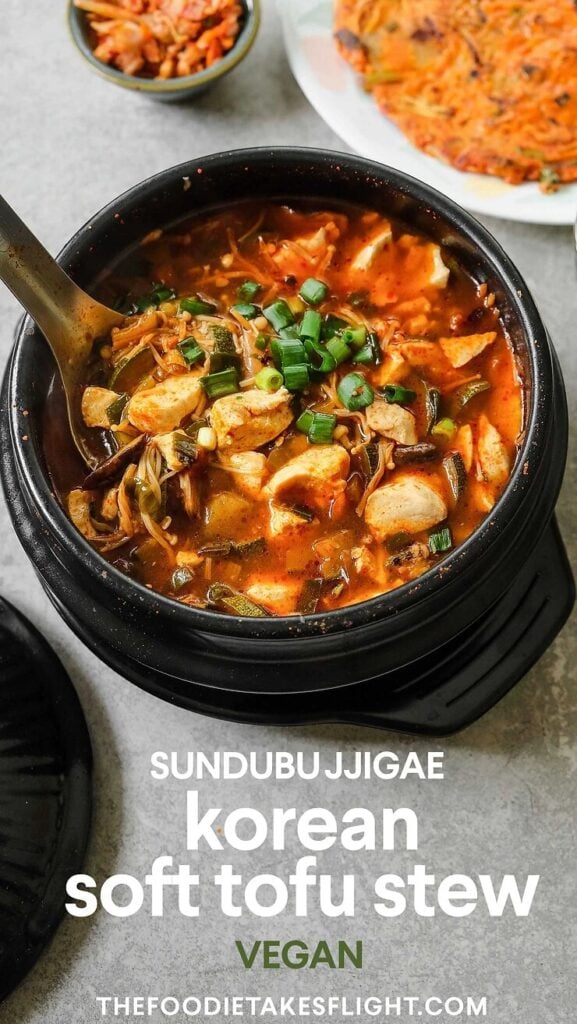
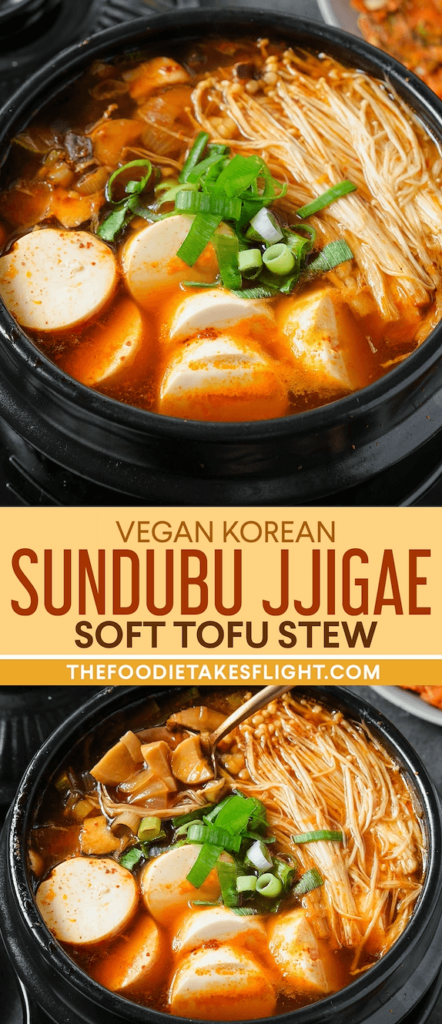



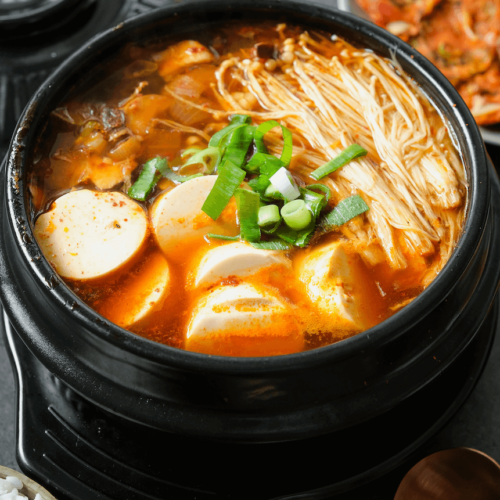





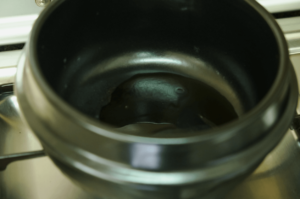









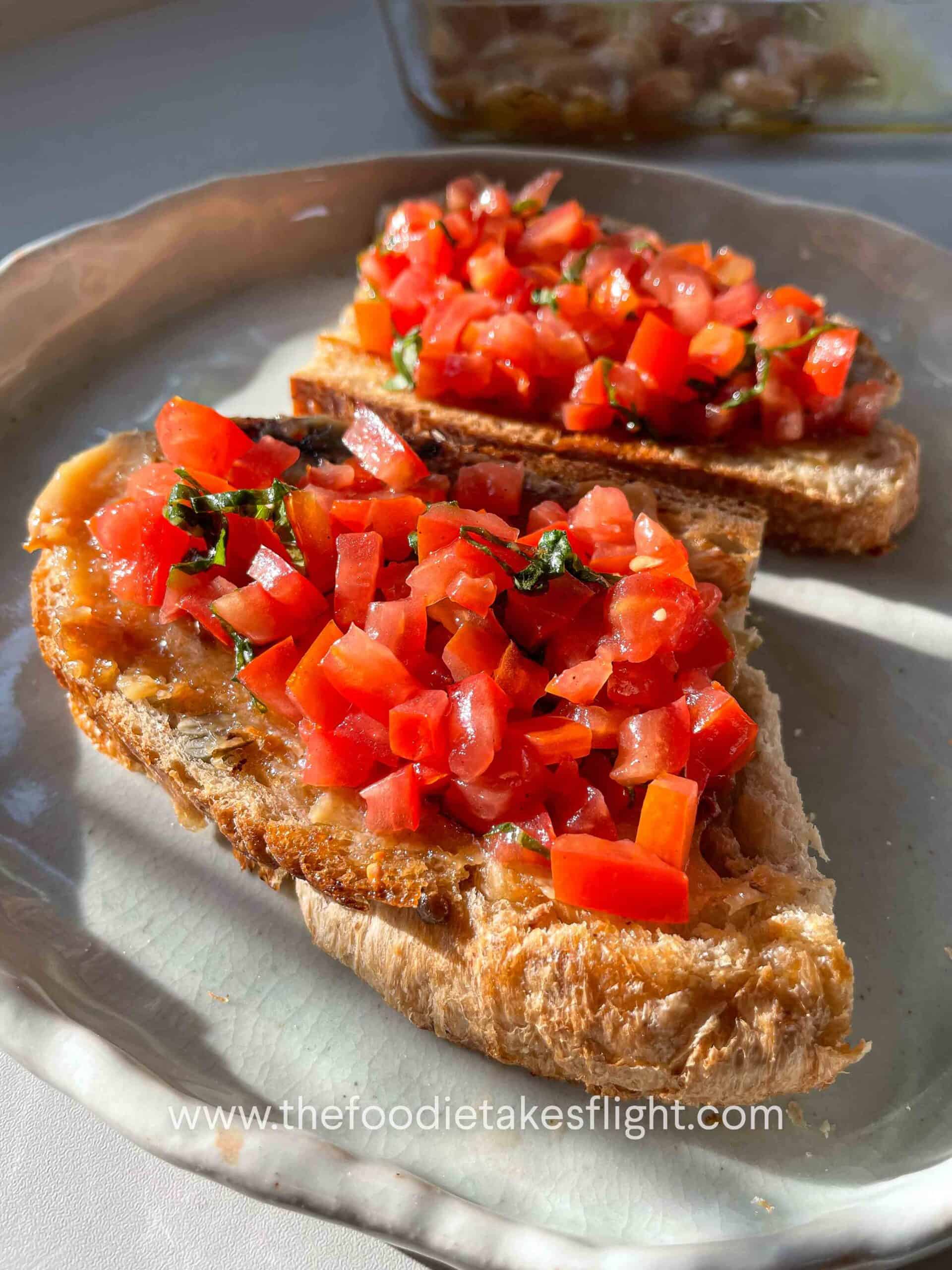
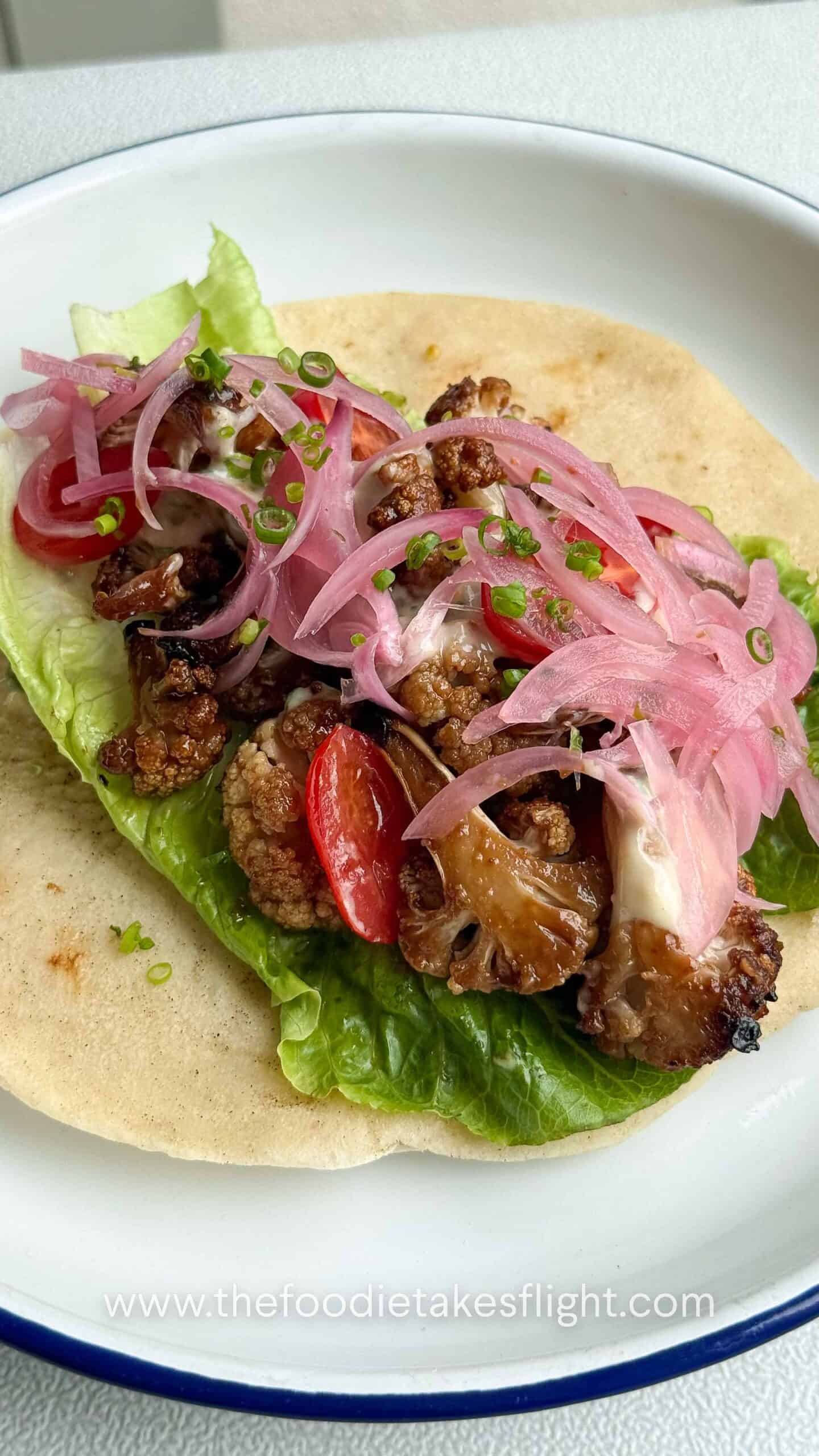
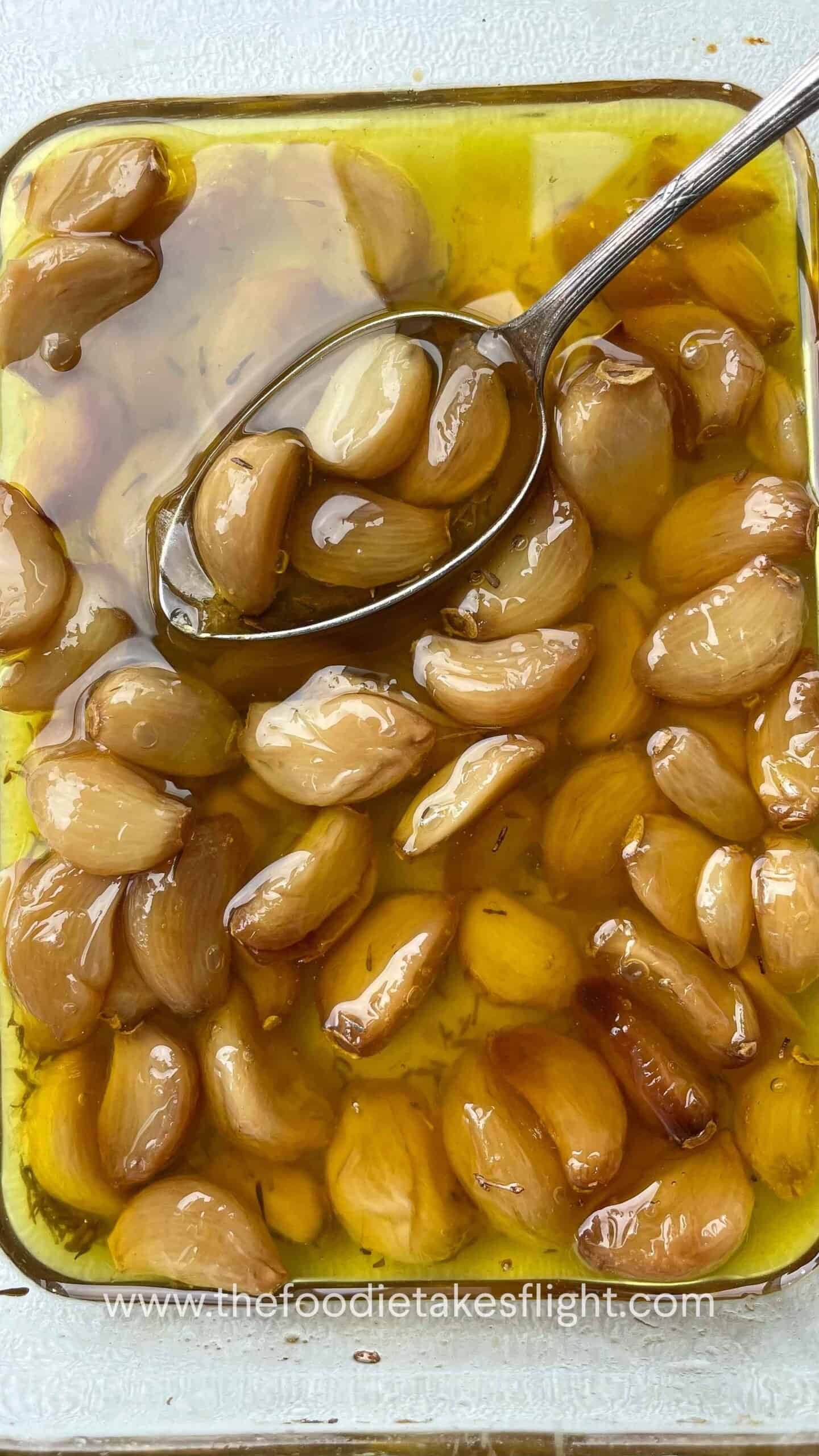

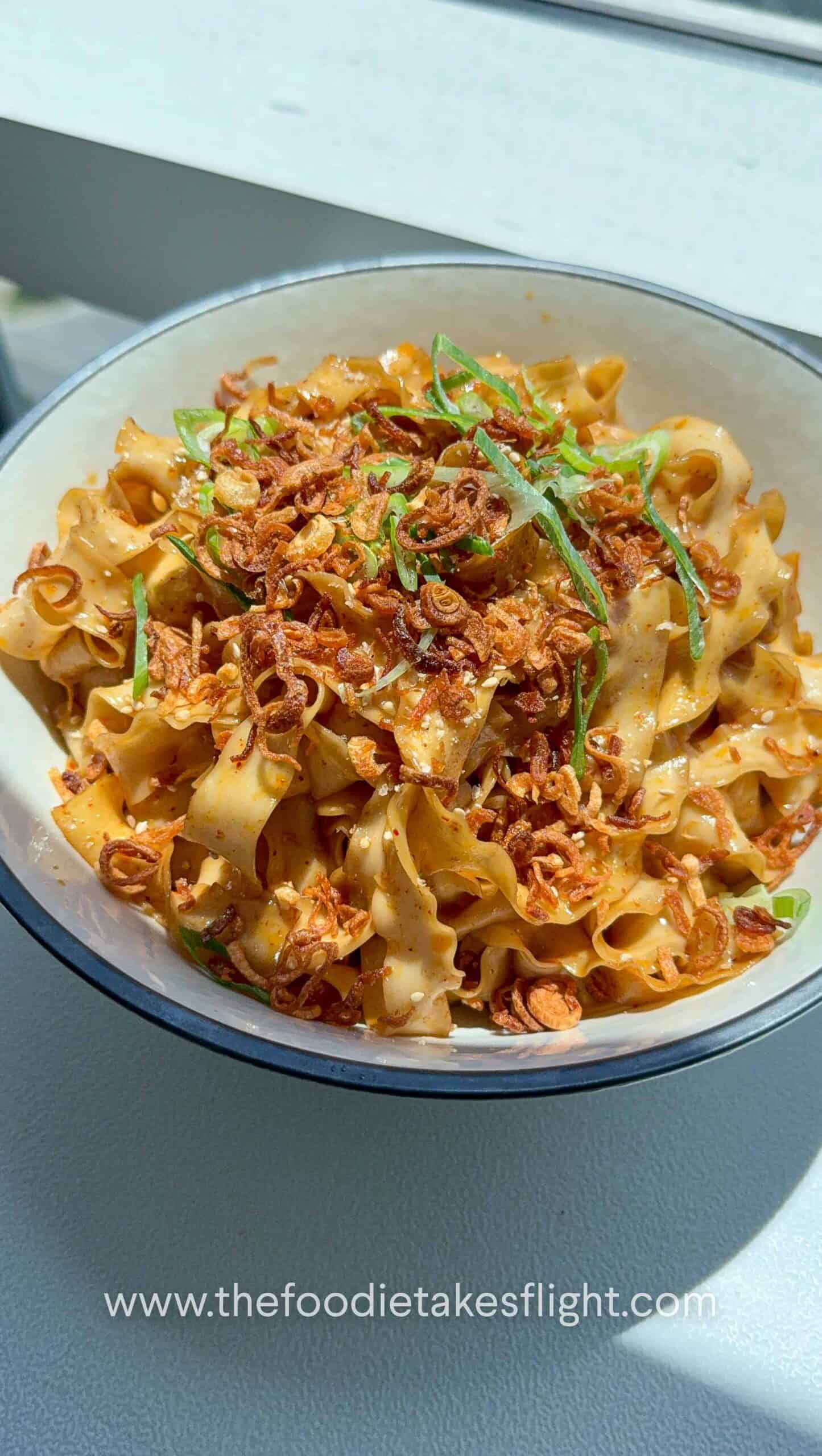
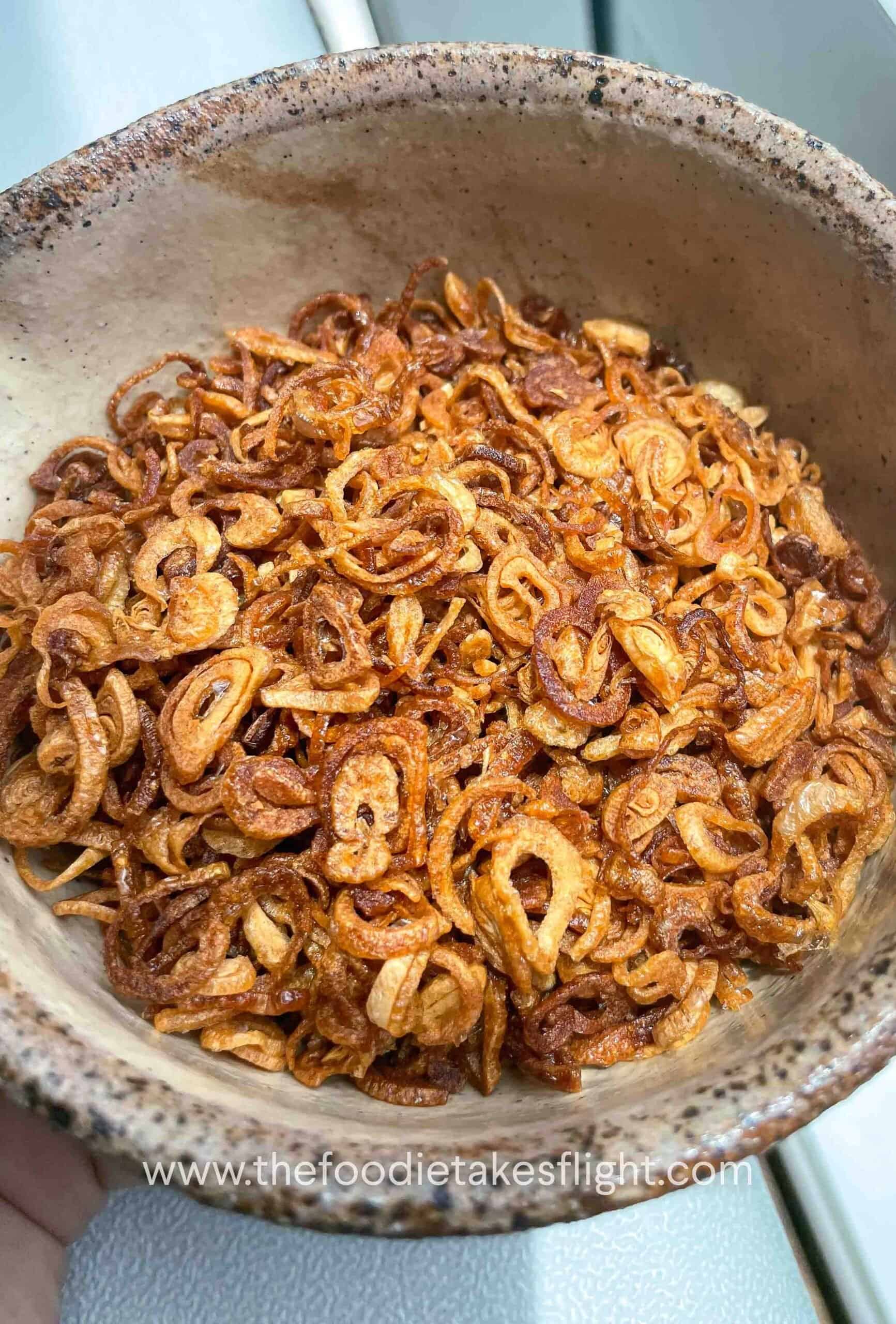
This Post Has 36 Comments
Thank you sooooo much for creating this helpful vegan version and with the enjoyable music. I’m hungry now.
Thank you too, Susan!! 🙂
I made this for dinner and loved it! It was perfect for a cold night. I made it with gochujang because I ran out of gochugaru, but it was still great. Definitely will be adding to my usual rotation of meals!
Thanks so much Louise! This is a weekly rotation for me too 🙂
I’ve been looking for a good vegan version of this recipe because adapting the meat versions led to a bland product. THANK YOU!!! This was so good!! So excited for the leftovers 🙂
This is really good! I used a firm Tofu instead of the soft and let it simmer for longer than the three minutes. Overall it’s delicious and packed with flavor.
Thanks so much Cindy!!
Thanks for providing mooorrre tofu dish ideas. Now it feels easier to be vegan for a starter like me. Will be cooking it now. ?
hi! this was a great recipe and i just wanted to add a tip! try adding 1 1/2 tbsp of the vegetarian “better than bouillon” soup base, it REALLY enhances the flavor.
Thats a great idea!! Thanks for sharing Chloe ◡̈
Great depth of flavor, simple instructions, and ingredients I almost always have on hand. I add in some carrots and daikon if I have any in the fridge to use them up. Thank you for the great recipe!
Thanks so much Cynthia!! ◡̈
I just came back from Korea and this was my favorite dish that I had there, will definitely be trying out this recipe!
Just a note that sundubu jiggae should have a kelp based broth. Bring some dried kelp and water to a boil, then turn off heat and let stand for 10-20 minutes. You could also add the dried mushrooms and make a mushroom kelp broth very easily. I find that the kelp broth is a very important aspect of sundubu jiggae 😀
Thanks for the tip! I sometimes like to soak dried shiitake and kombu in hot water and use that as the base of my broth. But will try boiling it next time too! ◡̈
I make this recipe all the time I could probably do it in my sleep now, I love it so much and I’m glad I get to add a bit of Korean food to our everyday life 🥰🥰
Yaay! It’s a part of my regular rotation too. Glad you love it Jennifer!! ◡̈
This recipe is delicious! I didn’t have enoki or king oyster mushrooms on hand so I used some sliced cremini, still great! I also added a bit of sugar because they do that in restaurants and it really elevates the dish. Thanks for the recipe, it’s flavourful and healthy 🙂
Thanks so much Ray, glad you liked it!
Yes yes yes!!! I used this as a vague blueprint instead of being patient and thorough, so I definitely could have made this even better. However, it came out very, very satisfying. I was concerned about the mushroom flavor clashing with others, but it was absolutely delightful. This definitely warrants a second making, and a closer look at the instructions for even closer to perfection.
Glad you enjoyed this Thanks Hillary ◡̈
Delicious flavors and easy to make! Loved the variety of mushrooms in it. Will definitely be making again!
Thanks so much Ash! Glad you liked it ◡̈
FYI. One should honor how food is traditionally made. Soondubu chigae has gochugaru oil. That is the most important preparation. Otherwise, it’s just a chili soup. Please do not recommend putting gochujang in soondubu chigae. Should people want to use gochujang, then one should consider making oil with it, then add to the chigae.
really tasty soup , i ate it with rice and it was deliciousssssss thank you for the recipe 😀
Thanks as well Sabrina! Happy you liked it ◡̈
Very nice! Used my last batch of kimchi for this and do not regret it 🙂
Thanks Niklas, hope you enjoyed your jjigae! ◡̈
It’s very delicious! I made it twice. I think it’s good with 2x the amount of gochugaru.
Thanks Rachel, glad you liked it!
Hi! Can this be kept in the fridge after cooking? I live alone and would love to make some, but can’t eat a whole recipe in one sitting.
Yup this stores well in the fridge ◡̈ just reheat again to enjoy warm!
This soup was so tasty. I made it with some hon dashi broth instead and used daikon radish instead of zucchini out of preference. Delish!
Oooh I’ve yet to try this with radish, will have to do so next time ◡̈ thanks so much!
I make this all the time, and I really enjoy it. I usually add a little more soy sauce and add some sesame oil as well.
Thanks Katie! Appreciate it ◡̈